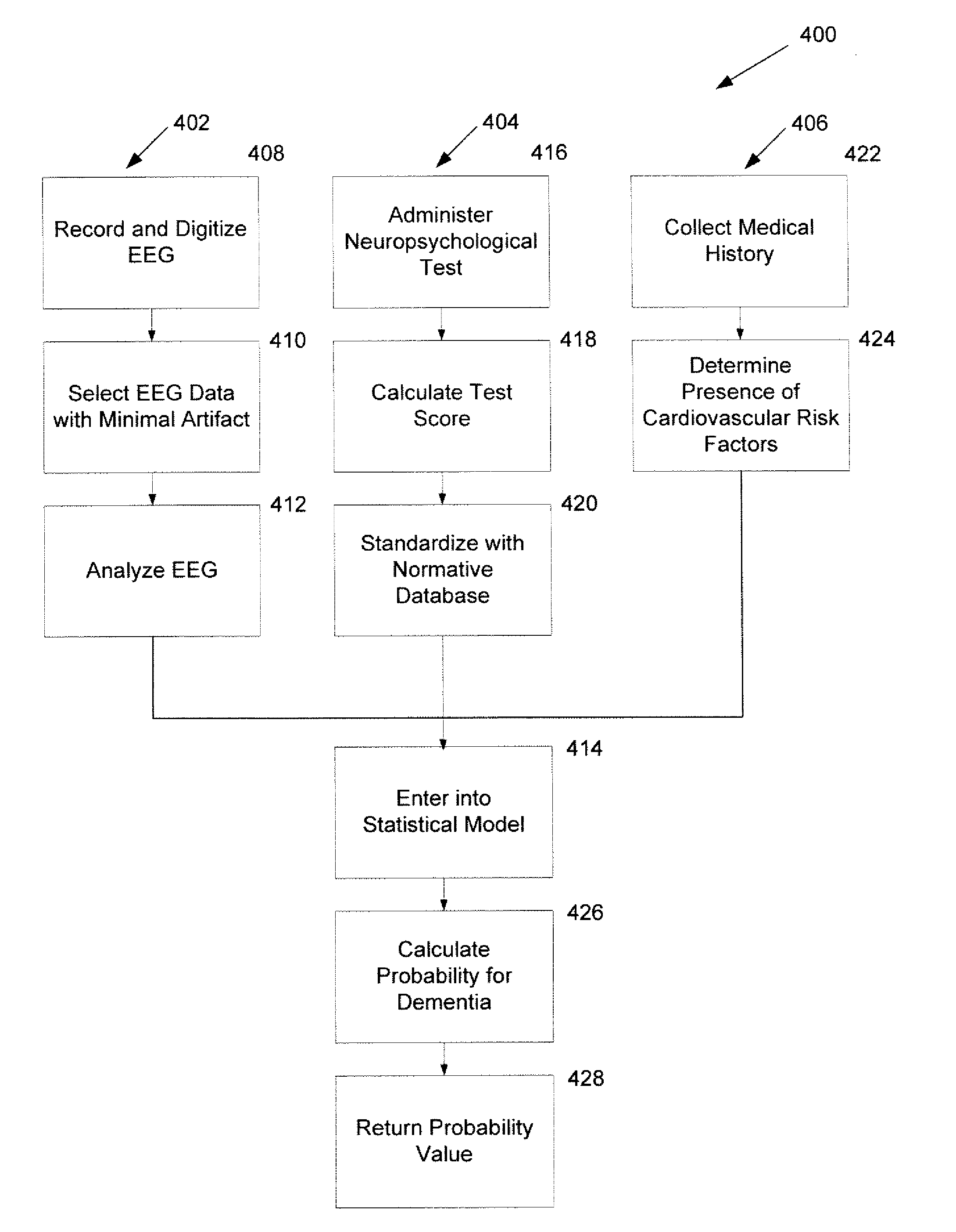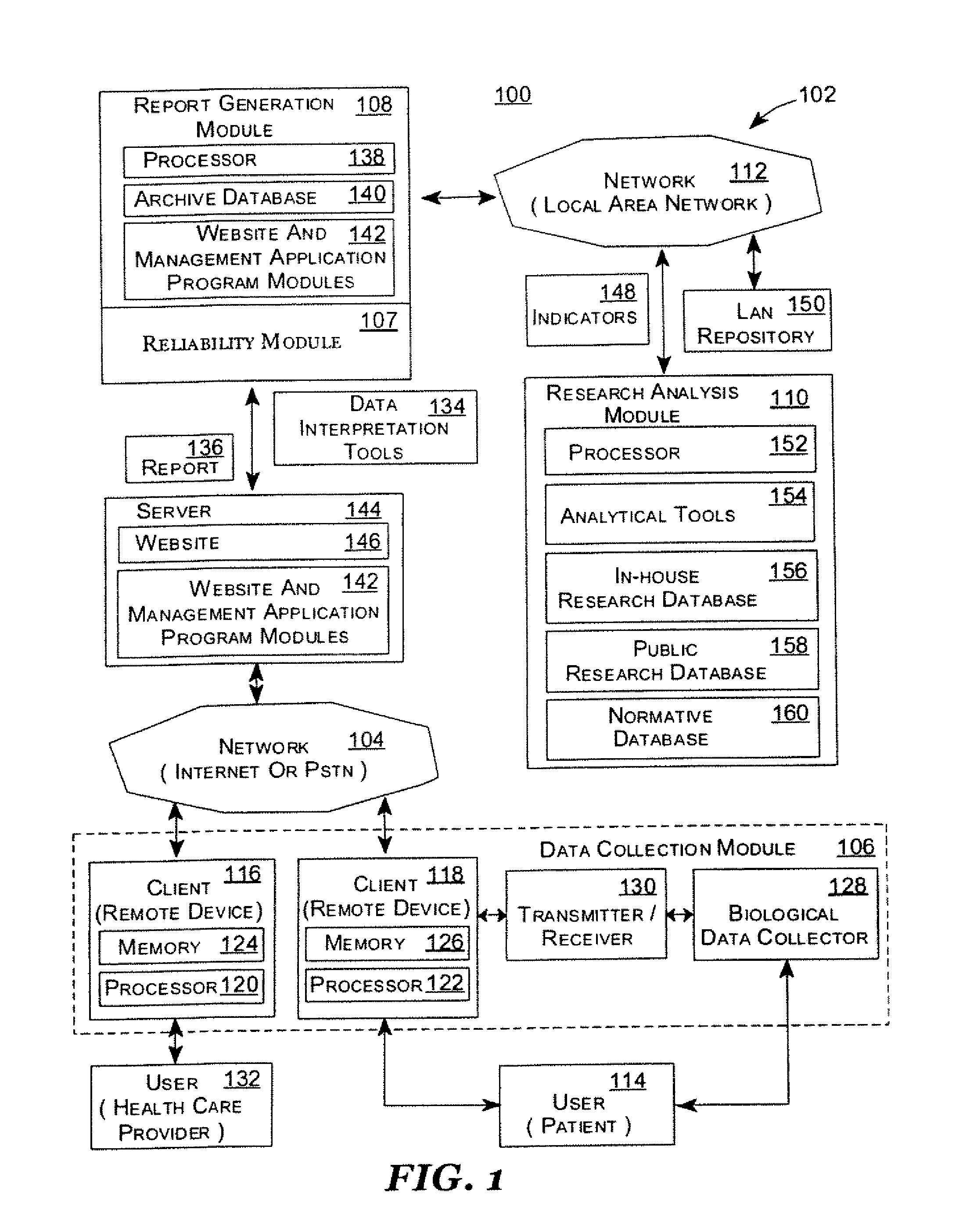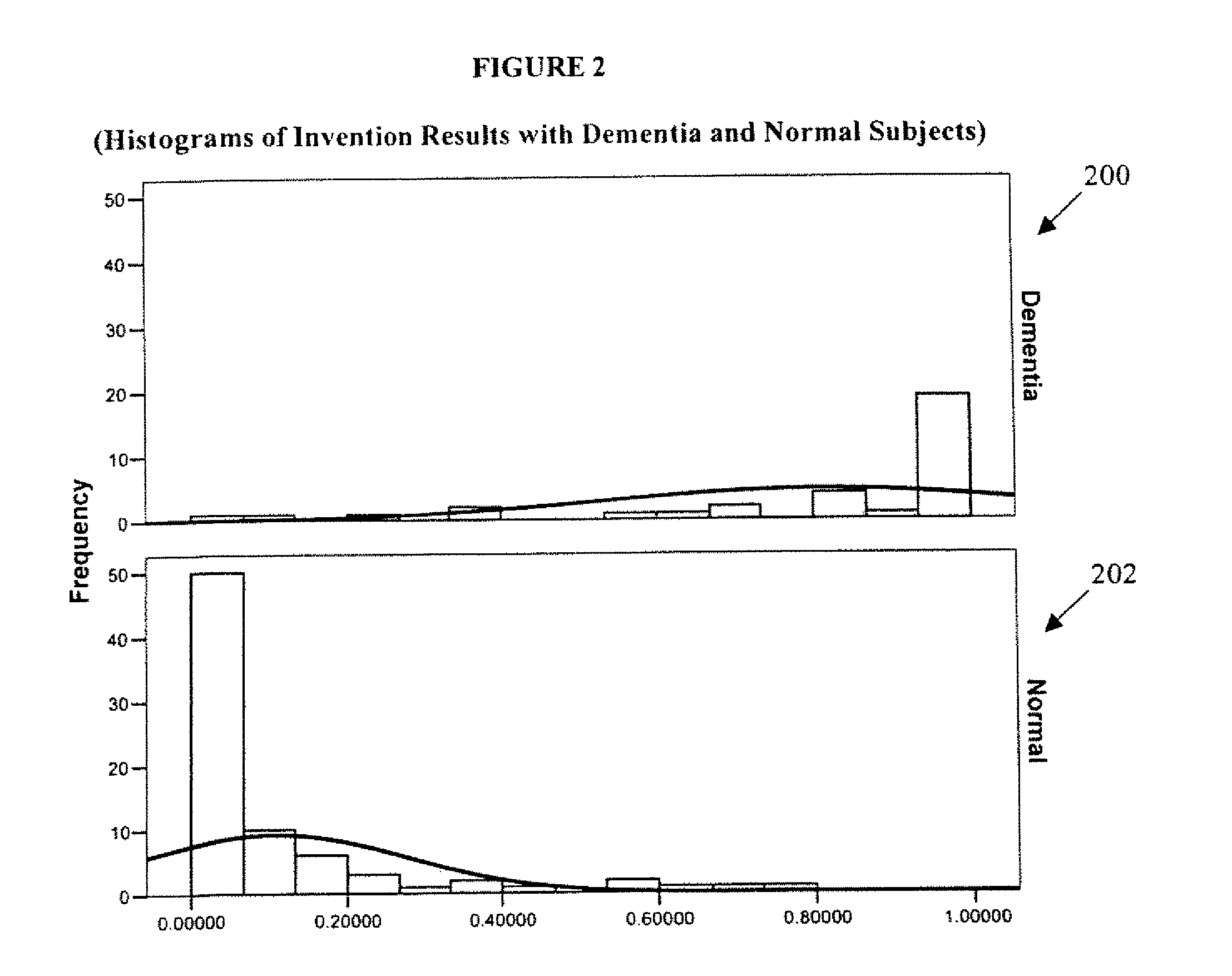Systems and Methods for Analyzing and Assessing Dementia and Dementia-Type Disorders
a dementia and dementia-type technology, applied in the field of biological disorders, can solve the problems of aging as a major risk factor for dementia, and achieve the effects of improving accuracy, sensitivity, specificity and overall accuracy, and accurate detection
- Summary
- Abstract
- Description
- Claims
- Application Information
AI Technical Summary
Benefits of technology
Problems solved by technology
Method used
Image
Examples
Embodiment Construction
[0039]Systems for Analyzing and Assessing Dementia. FIG. 1 illustrates one example environment 100 for an example system 102 in accordance with an embodiment of the invention. Using the example system 102 illustrated in FIG. 1, the process of FIG. 4 can be implemented.
[0040]The environment 100 shown includes a network 104 in communication with the system 102. In turn, the system 102 includes one or more system modules, such as 106, 107, 108, 110, that can operate with and in accordance with various embodiments of the invention. Each of the system modules, for instance 106, 107, 108, 110, can communicate with each other through the network 104 or via an associated network 112 such as a local area network (LAN). For example in the embodiment shown, the system modules can be a data collection module 106, a frequency spectrum / reliability module 107, a report generation module 108, and a research analysis module 110. The data collection module 106 and frequency spectrum / reliability modul...
PUM
 Login to View More
Login to View More Abstract
Description
Claims
Application Information
 Login to View More
Login to View More - R&D
- Intellectual Property
- Life Sciences
- Materials
- Tech Scout
- Unparalleled Data Quality
- Higher Quality Content
- 60% Fewer Hallucinations
Browse by: Latest US Patents, China's latest patents, Technical Efficacy Thesaurus, Application Domain, Technology Topic, Popular Technical Reports.
© 2025 PatSnap. All rights reserved.Legal|Privacy policy|Modern Slavery Act Transparency Statement|Sitemap|About US| Contact US: help@patsnap.com



